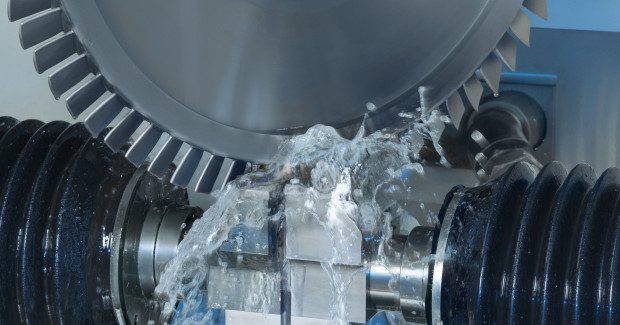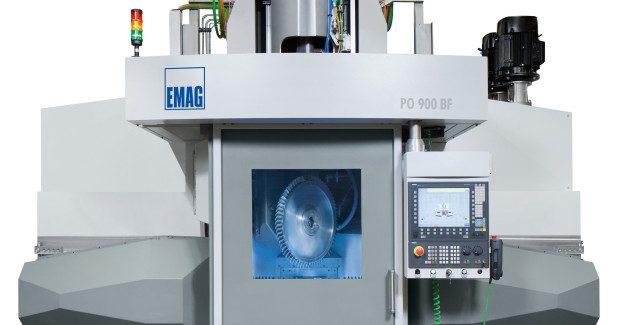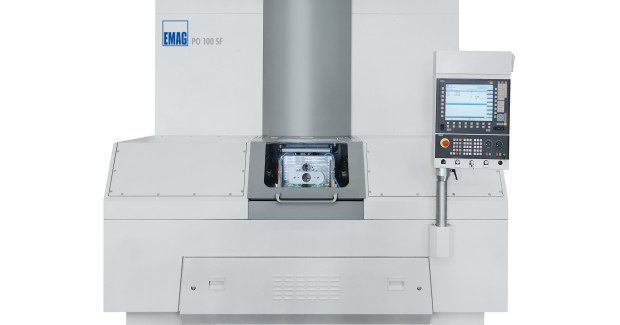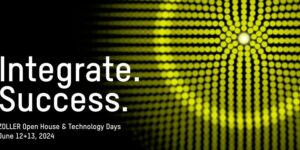Machining Blisks Faster for the Aircraft Industry
Component parts suppliers are convinced that PECM technology is almost indispensable for the many innovations taking place in aircraft construction. Here’s why.
Posted: January 8, 2016
According to the energy efficiency report from the German Airline Association, a modern airplane uses just three liters of fuel per passenger per 100 km of flight route. The consumption level has been falling for years now, made possible by a multitude of measures, including designers developing increasingly efficient jet engines consisting of high-performance material components. This development poses a challenge to the mechanical engineers closely connected with aircraft production, as aerospace manufacturers are on the lookout for new manufacturing processes that ensure more efficient and precise machining of central engine components such as blisks and single blades.
The number of blisks required by the aircraft industry is rising steadily. Larger engines now feature a number of blisk stages in their compressors. To ensure that these key components can withstand the extreme temperatures generated, they are made of very hard, heat-resistant materials such as nickel-based alloys (Inconel) or titanium aluminides. Many well established conventional machining processes are pushed to their economic limit as the increasing hardness of the material reduces the life expectancy of expensive milling tools and thus raises production costs. There are other challenges too. The conventional machining of super alloys produces higher temperatures that have a negative influence on the material’s structure and endanger the process integrity.
What alternative machining strategies are available that guarantee the efficient processing of blisks?
One is the Precision Electro-Chemical Machining (PECM) process developed by EMAG ECM GmbH (Gaildorf, Germany), which offers an economically viable solution that was recently confirmed by a systematic, detailed study undertaken through the Fraunhofer-Institute for Production Technology (Aachen, Germany) and the machine tool laboratory of the RWTH Aachen University. Their specialists compared different blisk machining strategies – from multi-axis milling combined with polishing to high-pressure waterjet cutting combined with PECM finishing. It became clear that – even with an annual production of only 800 nickel-based HPC-blisks – the unit cost can be reduced by 50 percent compared to conventional machining methods, as long as the right alternative strategy is chosen. They also found that the best methods cannot succeed without PECM finishing: inclusion of the electro-chemical process makes the material especially smooth and ensures that tool wear is minimal.
During the electro-chemical process an electrolyte solution passes between the workpiece (the positive anode) and the tool (the negative cathode). This removes metal ions off the workpiece. The shape of the cathode – i.e. the tool with its active, conductive sectors – ensures that the removal of the material from the workpiece will achieve the desired component contour. This results in the best possible surface quality without burr formations, without changing the material structure and with low roughness values. Subsequent refinement processes on the blades, such as barreling, are noticeably shorter or may, in certain cases, even become unnecessary. Either result provides a vital reduction in unit costs.
PECM narrows the gap between workpiece and tool that the electrolyte solution passes through and overlays the feed rate for the electrolyte with a mechanical, oscillatory movement. These two factors combine for even more effective and accurate material removal that results in the economic advantages identified by the machine tool laboratory. Two sizes of PECM machines cover the diverse machining tasks associated with engine construction: the compact model PO 100 SF for the complex machining of single turbine blades, and the larger model PO 900 SF for the machining of complete, and consequently much larger, disks of up to 900 mm diameter, with a maximum weight of 500 kg. “From these two models we develop customized, competitively priced manufacturing solutions for small and large components,” explains Richard Keller, member of the management at EMAG ECM.
As development partners to their customers, the company offers complete and comprehensive services for everything connected with the ECM manufacturing process. Their modern on-site laboratory features a production-oriented, multi-axis machine to carry out general feasibility studies and establish precise cost-benefit ratios for processing specific components and materials. For example, one well-known engine manufacturer certified the blades machined on a PO 100 SF as acceptable for use in aircraft – unusually quick after their sub-contractor started production on an EMAG machine.
A similar development is expected for blisk machining on the PO 900 SF, where components produced by a number of North American companies have already entered the qualification phase and plenty of market opportunities are opening for PECM because it offers a modular machine concept that can be quickly customized to suit the demands made by the component. With this process, parts suppliers can enjoy the benefits of a high degree of expertise in the manufacture and development of machine tools, including innovations such as Mineralit concrete machine bases, intelligent software and hardware interfaces, and effective automation solutions that are part of every ECM machine. Machine manufacturers are convinced that this technology is almost indispensable for the many innovations taking place in aircraft construction.
EMAG LLC, 38800 Grand River Avenue, Farmington Hills, MI 48335, 248-442-6719, Fax: 248-447-7784, kkilgore@emag.com, www.emag.com.












